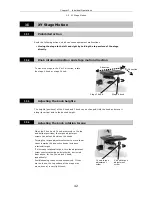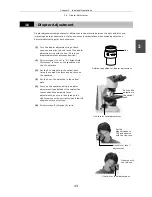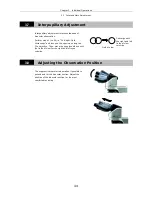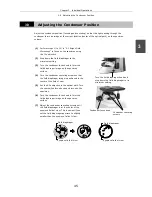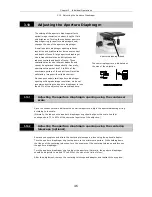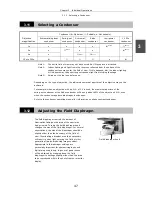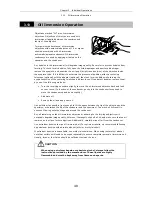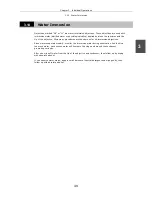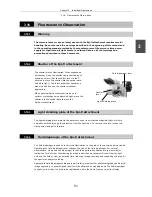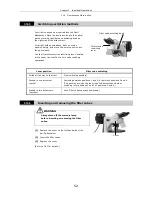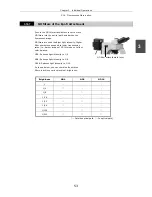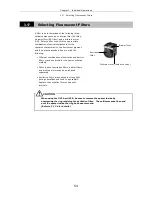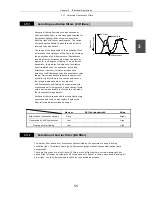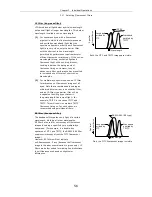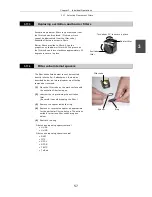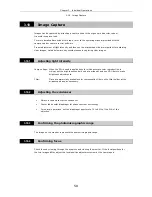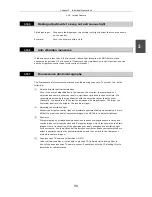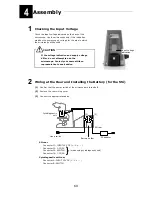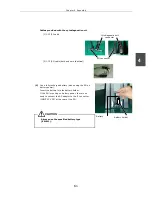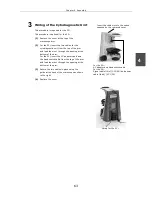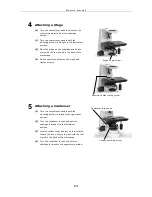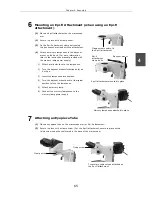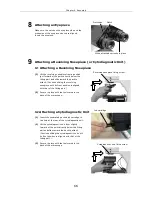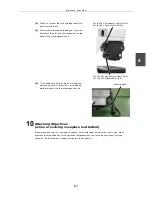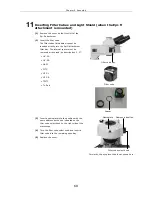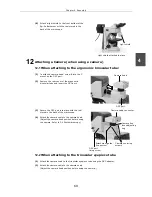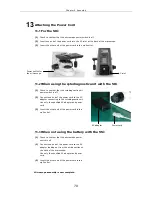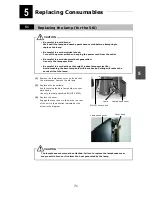
Chapter 3 Individual Operations
3.17 Selecting Fluorescent Filters
56
LP filter (long-pass filter)
LP filters block all light below a certain wavelength
but pass all light of longer wavelengths. This border
wavelength is called a cut-on wavelength.
(1)
For specimens dyed with a fluorescent
pigment in which the fluorescent waveband
and excitation waveband (light that the
specimen absorbs in order to emit fluorescent
light) are very close, select a barrier filter
with the shortest cut-on wavelength
permitted by performance requirements for
efficient fluorescent microscopy. If the cut-on
wavelength is long, excitation light and
fluorescent light will be entirely distinct,
tending to darken the background of
fluorescent images. However, recent
advances in filter performance have resulted
in increased use of filters of short cut-on
wavelengths.
(2)
For multiple-dye specimens, use an LP filter
for microscopy of fluorescent images of all
dyes. Note that a combination involving an
ordinary dichroic mirror, an excitation filter,
and an LP-filter-type barrier filter will be
incapable of exciting dyes that emit
long-wavelength fluorescent light – for
example, TRITC in the case of FITC and
TRITC. This will result in very dark TRITC
fluorescent images. For such cases, we
recommend using multiband filters.
BP filter (bandpass filter)
The bandpass filter passes only light of a certain
wavelength, blocking all other wavelengths.
BP filters are used for microscopy of fluorescent
images involving a specific dye in multiple-dye
specimens. (For example, in a double-dye
specimen of FITC and TRITC, the BA520-560 filter
enables microscopy of just the FITC fluorescent
image.)
However, BP filters will not indicate
self-fluorescence, if any (because the fluorescent
image in the above combination is green only). LP
filters are better suited for making fine distinctions
in self-fluorescence based on slight color
differences.
Waveband
emitted by
FITC
LP520
Wavelength
Both the FITC and TRITC images are visible.
Waveband
emitted by
TRITC
Waveband
emitted by
FITC
BA520-560 (BP type)
Only the FITC fluorescent image is visible.
Waveband
emitted by
TRITC
Spect
ra
l
tr
an
smi
ssi
on
Wavelength
Spect
ra
l
tr
an
smi
ssi
on

